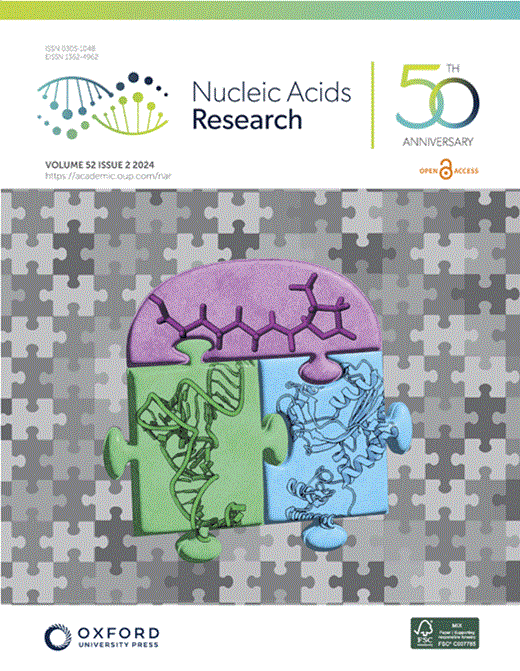The yeast CST and Polα/primase complexes act in concert to ensure proper telomere maintenance and protection
IF 16.6
2区 生物学
Q1 BIOCHEMISTRY & MOLECULAR BIOLOGY
引用次数: 0
Abstract
Polα/primase (PP), the polymerase that initiates DNA synthesis at replication origins, also completes the task of genome duplication by synthesizing the telomere C-strand under the control of the CTC1/CDC13-STN1-TEN1 (CST) complex. Using cryo-electron microscopy (cryo-EM) structures of the human CST-Polα/primase-DNA complex as guides in conjunction with AlphaFold modeling, we identified structural elements in yeast CST and PP that promote complex formation. Mutating these structures in Candida glabrata Stn1, Ten1, Pri1, and Pri2 abrogated the stimulatory activity of CST on PP in vitro, supporting the functional relevance of the physical contacts in cryo-EM structures as well as the conservation of mechanisms between yeast and humans. Introducing these mutations into C. glabrata yielded two distinct groups of mutants. One group exhibited progressive, telomerase-dependent telomere elongation without evidence of DNA damage. The other manifested slow growth, telomere length heterogeneity, single-stranded DNA accumulation and elevated C-circles, which are indicative of telomere deprotection. These telomere deprotection phenotypes are altered or suppressed by mutations in multiple DNA damage response (DDR) and DNA repair factors. We conclude that in yeast, the telomerase inhibition and telomere protection function previously ascribed to the CST complex are mediated jointly by both CST and Polα/primase, highlighting the critical importance of a replicative DNA polymerase in telomere regulation.求助全文
约1分钟内获得全文
求助全文
来源期刊

Nucleic Acids Research
生物-生化与分子生物学
CiteScore
27.10
自引率
4.70%
发文量
1057
审稿时长
2 months
期刊介绍:
Nucleic Acids Research (NAR) is a scientific journal that publishes research on various aspects of nucleic acids and proteins involved in nucleic acid metabolism and interactions. It covers areas such as chemistry and synthetic biology, computational biology, gene regulation, chromatin and epigenetics, genome integrity, repair and replication, genomics, molecular biology, nucleic acid enzymes, RNA, and structural biology. The journal also includes a Survey and Summary section for brief reviews. Additionally, each year, the first issue is dedicated to biological databases, and an issue in July focuses on web-based software resources for the biological community. Nucleic Acids Research is indexed by several services including Abstracts on Hygiene and Communicable Diseases, Animal Breeding Abstracts, Agricultural Engineering Abstracts, Agbiotech News and Information, BIOSIS Previews, CAB Abstracts, and EMBASE.
 求助内容:
求助内容: 应助结果提醒方式:
应助结果提醒方式:


